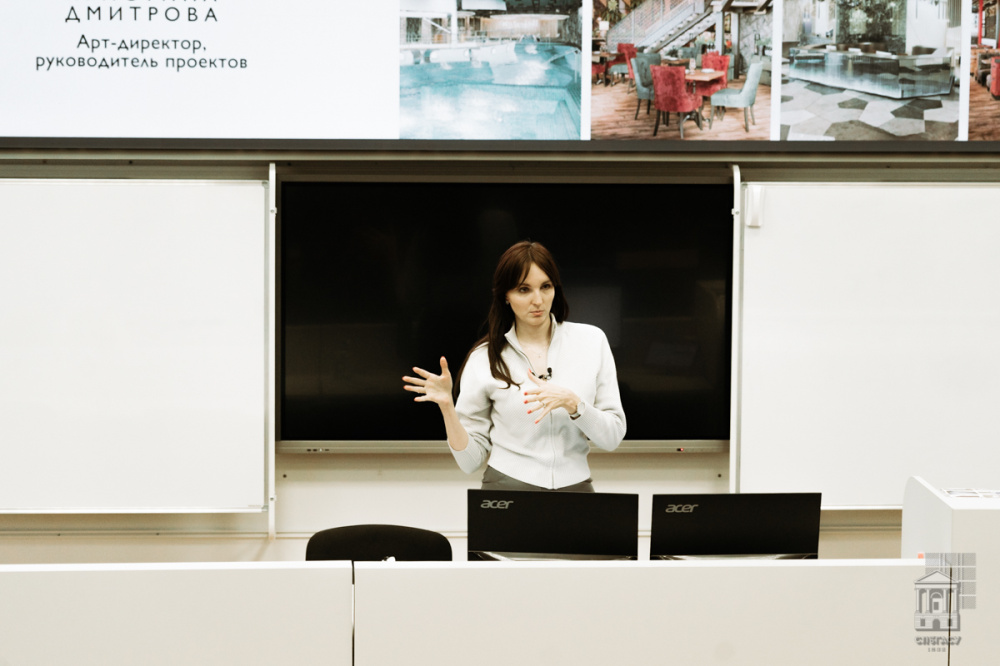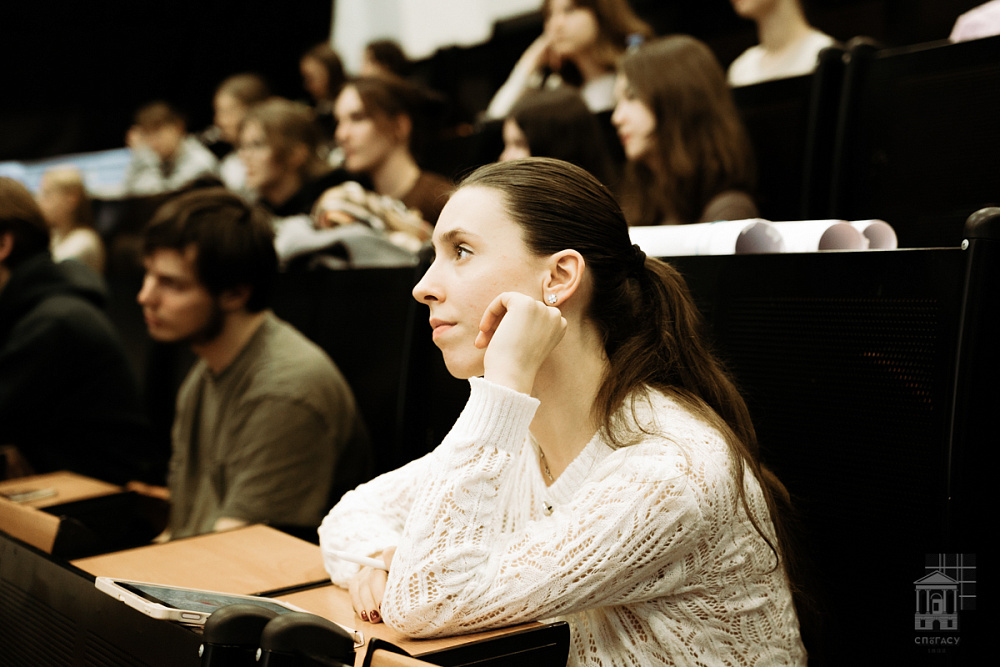 Kristina Dmitrova
Kristina Dmitrova
SPbGASU has announced a student competition for the concept of the main building's vestibule. The best project will be proposed for implementation, and its author will go down in the history of their native university. Graduates of our university who have succeeded in their profession and built a career at the international level have been invited as experts. They not only evaluate the works, but also give lectures where they share their experience. Among them is the famous and successful architect Kristina Dmitrova.
Kristina Dmitrova graduated from the SPbGASU Faculty of Architecture in 2015 with honors. At the age of twenty-one, she won an architectural competition and went to Rome for an internship at the Exclusiva Design studio, which developed premium-class interior projects. At twenty-four, Kristina opened her own business specializing in the design of public interiors and private homes. One of her first commercial projects was the Alpenhaus restaurant on Krestovsky Island in St Petersburg for 1,200 seats. Today, Kristina Dmitrova's company has accumulated extensive experience in cooperation with various business areas, the public sector, and has designed more than 50 thousand square meters of various objects, including abroad. Based on her own experience, she identified nine golden rules of public interior design and recommended that students carefully study them in order to design a successful project that will be approved by the customer. The lecturer confirmed each rule with real objects.
So, rule No.1 “Clarity, clarity, clarity” requires being specific and consistent, being able to correctly and clearly convey the details of your project to the customer and make decisions promptly. Otherwise, decisions will be made by third-party contractors involved in the project, and the reputation of the architect-designer will suffer. “Your task is to competently implement the project, and not dissolve in creative fantasies,” advised Kristina Dmitrova.
Rule No. 2 "5 percent and 95 percent" clearly distinguishes between time and effort for design and project implementation. As practice shows, only 5 percent of time and labor resources should be devoted to design, the rest should be spent on implementation. For example, out of the entire team, only two specialists are engaged in design during the month, and the rest - in implementation for nine months. "Meanwhile, the success of the project implementation largely depends on these 5 percent. Therefore, the concept must be seriously dealt with, but keep in mind that without the competencies of other specialists participating in the implementation of the project, without experienced managers, success cannot be achieved," the architect emphasized.
Rule No. 3 requires the use of wear-resistant materials. Public places usually have a high flow of visitors, so the materials must be durable so that the facility can justify itself functionally. The larger the public project, the greater the flow of people and the more wear-resistant materials must be used. "Otherwise, they will soon become unusable, the establishment will incur repair costs and will be forced to close, which means it will lose profits. Therefore, wear-resistant and easily restored materials are a priority," the expert advised.
Rule No. 4 provides principles of interaction with contractors. It is necessary to take into account that, in addition to the architect, other specialists are also involved in the project, for example, engineers, who are obliged to comply with standards and requirements. “And here you need to be a mediator-negotiator. They do according to the requirements, and we need to create a beautiful interior. Therefore, our task is to get permission from them and not spoil the design. To do this, it is necessary to study engineering systems in order to understand the engineer’s train of thought in advance,” Kristina emphasized.
Rule No. 5 requires paying attention to vandalism prevention. Don't have illusions that people will use everything carefully, everything should be securely fastened.
Rule No. 6 says: the less maintenance the interior requires, the better. For example, if you want to add greenery, then you should give preference to artificial, because living greenery requires proper care, proper lighting, and hiring additional staff. "Technologies in the production of artificial greenery have advanced far ahead, and now it is difficult to distinguish it from living plants. Even in Singapore, where, it would seem, there are all the conditions for growing living plants, this is the rule they adhere to in interior design," said Khristina.
Rule No. 7 requires working closely with the fire department. Their requirements do not allow for flexibility, so it is necessary to discuss any restrictions with them in advance.
Rule No. 8 is the proper use of the customer company's branding elements - corporate colors, symbols. For such interior visualization, you need to request their brand book.
Rule No. 9 concerns the creation of a unique design. Often, the customer wants not only to receive a unique interior at the time of creation, but also to prevent its further duplication. This is normal practice, and such wishes should be listened to.
The specialist also advised to participate in various competitions to gain experience. The students listened to the practicing architect with interest and actively asked questions.
"By participating in the competition as an expert, I thank my home university for the time I spent here, the teachers who gave me deep professional knowledge, and I consider it my duty to contribute to its further development. In addition, I want to help students with practical advice that I would have been glad to hear from practicing specialists during my years of study. I am sure that my experience will help them in the competition and in their future profession," noted Kristina.
The operator of the competition was the SPbGASU Educational Center of Project-Based Learning. Its director Aleksandra Yugay emphasized that the contestants faced a difficult task.
"Based on this, we invited not only heads of departments and teachers as experts, but also graduates of our university who have built a career in interior design bureaus, so that they could give applied lectures on public interior design, talk about approaches to design, based on their own practice. This will allow the competition participants to adjust their projects taking into account advice from professionals, and delve deeper into this topic. The semi-final of the competition will take place on 8 November, ten finalists will be announced. Taking into account the opinions of experts, they will finalize their projects to participate in the final, which will take place at the end of November," said Aleksandra Yugai.

